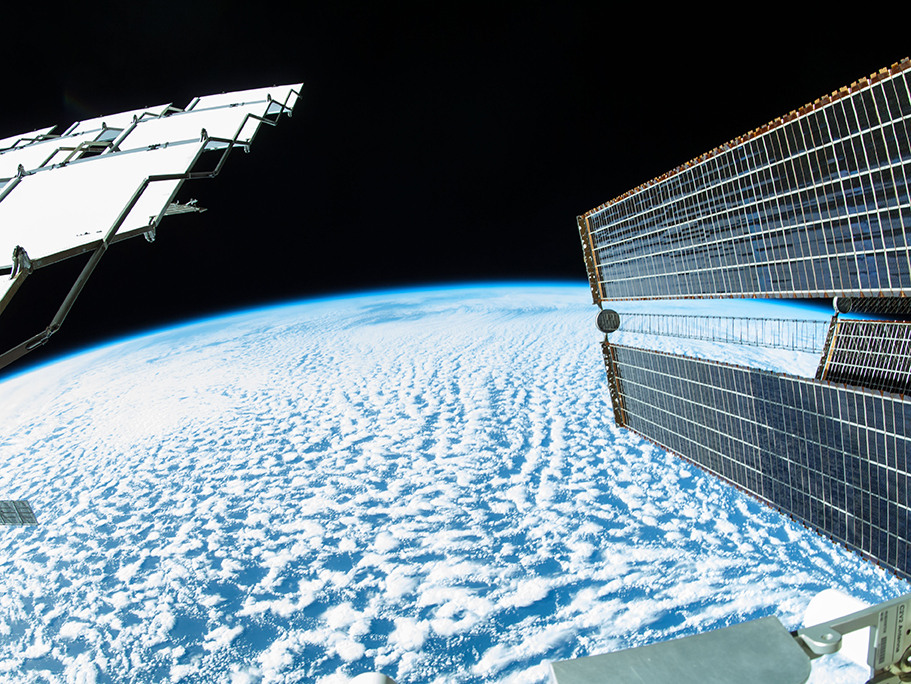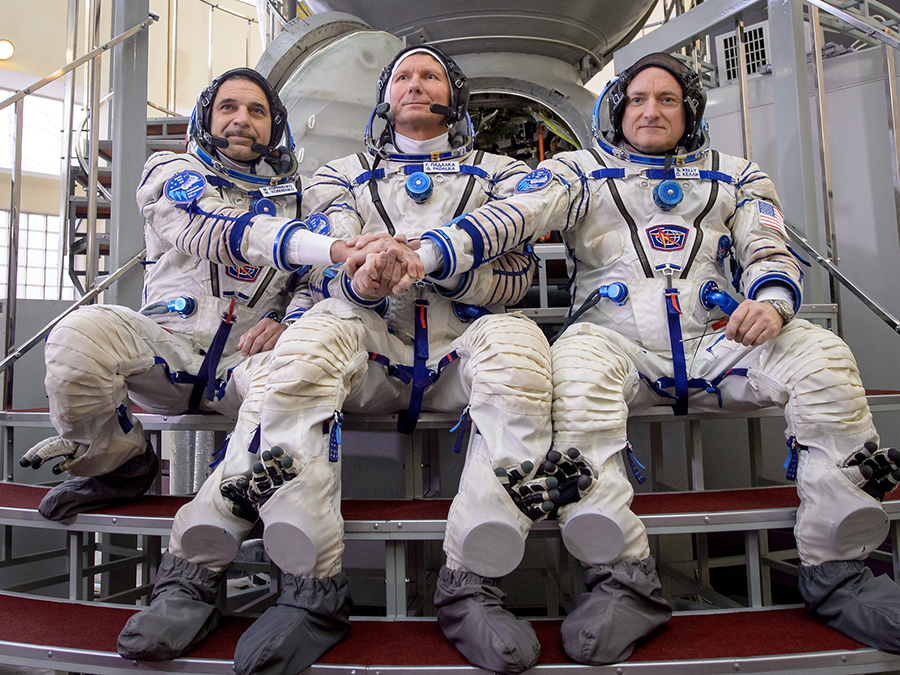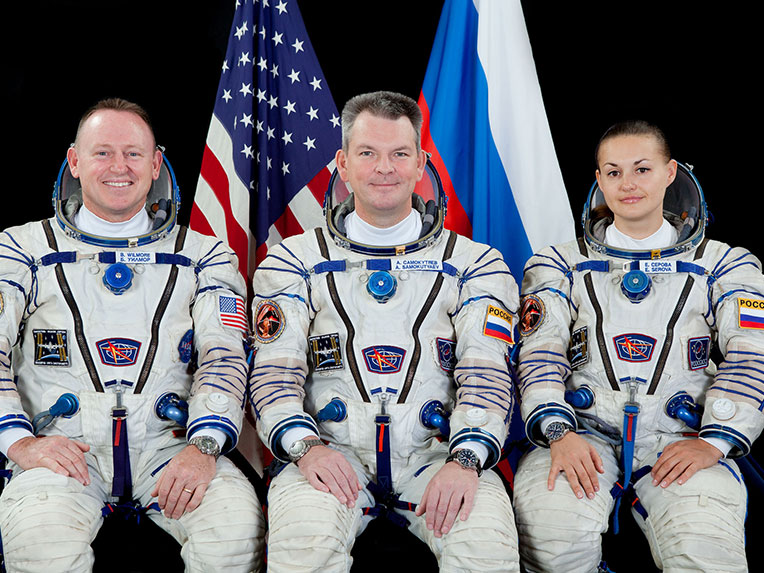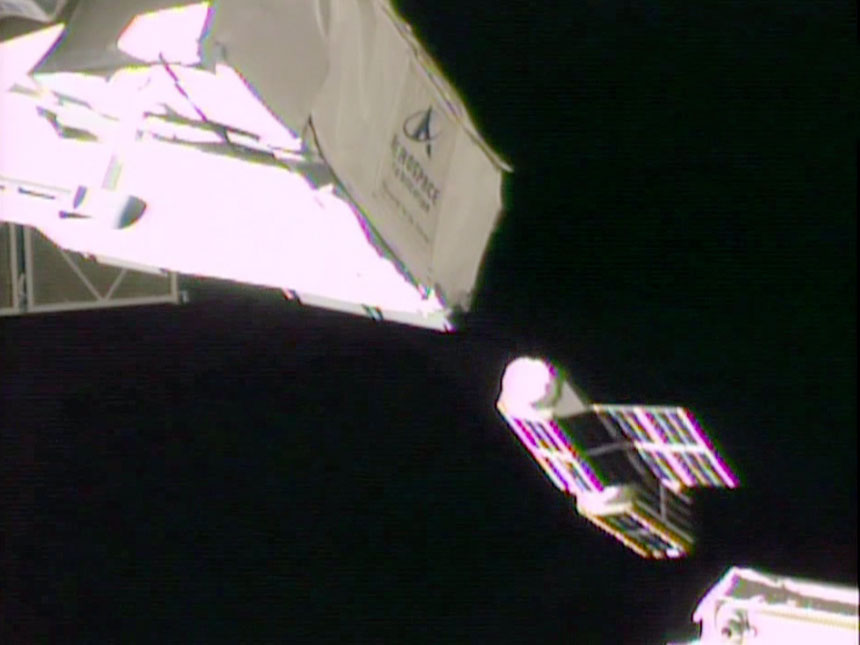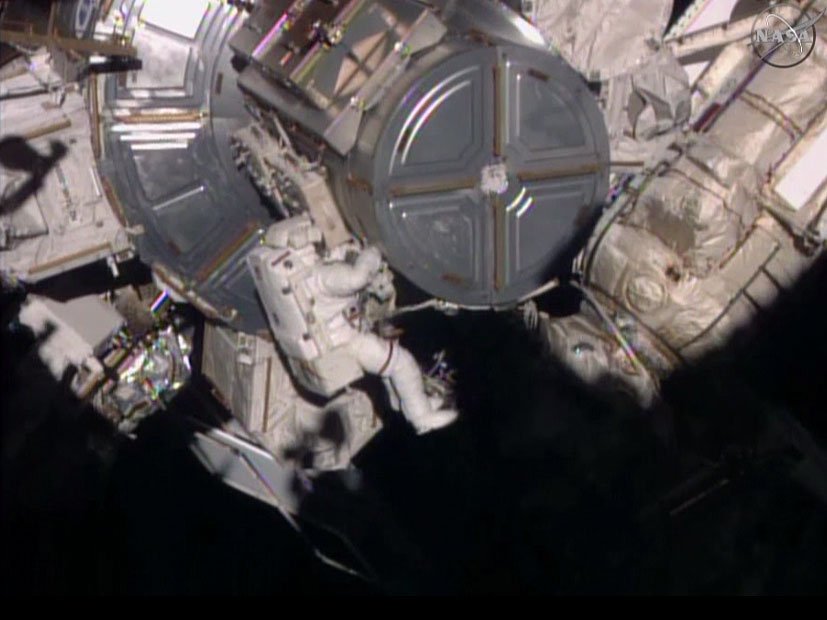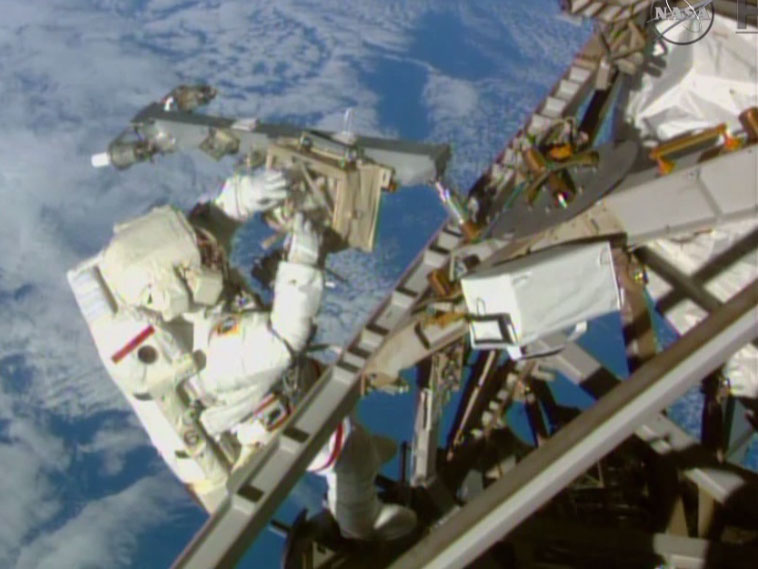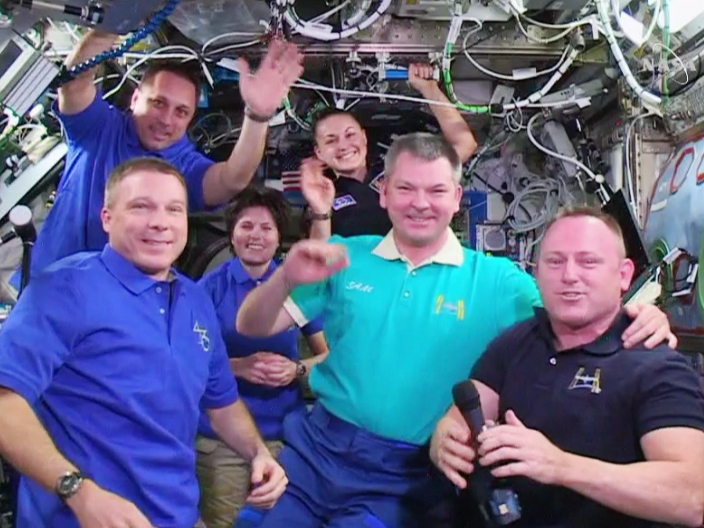
Expedition 42 Commander Barry Wilmore handed over control of the International Space Station to NASA astronaut Terry Virts in a Change of Command Ceremony today. Virts will lead Expedition 43 when Wilmore and Soyuz Commander Alexander Samokutyaev and Flight Engineer Elena Serova undock Wednesday at 6:44 p.m. EDT in their Soyuz TMA-14M spacecraft.
› Check out the NASA TV of Expedition 42 undocking activities
Back on Earth, a new Expedition 43 trio is relaxing as they count down to their March 27 launch. Riding with Soyuz TMA-16M Commander Gennady Padalka are One-Year crew members Scott Kelly and Mikhail Kornienko who will live in space until March 2016. Padalka will stay in space till September.
Meanwhile inside the station, Virts continues installing cables so future commercial crew vehicles can communicate with a pair of International Docking Adapters to be installed later this year. He and Flight Engineers Anton Shkaplerov and Samantha Cristoforetti also reviewed their emergency roles and responsibilities and practiced communication and coordination.

